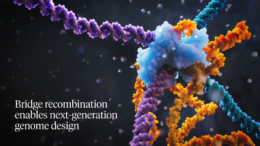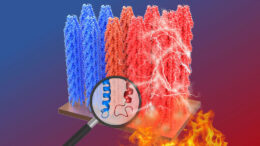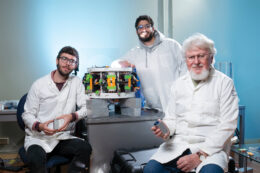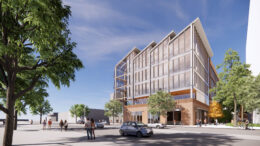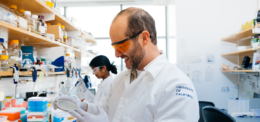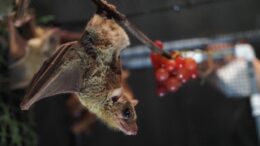Posts Tagged ‘research’
Scientists Discover Next-Generation System for Programmable Genome Design
A team of researchers led by Professor Patrick Hsu has discovered the first DNA recombinase that is programmable, allowing the user to specify any desired genomic target sequence and any donor DNA molecule to be inserted. The bridge recombinase mechanism promises to expand genome editing beyond CRISPR and RNA interference (RNAi) to offer a unified mechanism for programmable DNA rearrangements. Bioengineering graduate student Nicholas Perry is also a lead author of the study, along with other researchers from the Arc Institute.
Read MoreSo to speak: how bats and humans communicate
Berkeley researchers led by Professor Michael Yartsev, working with scientists at Carnegie Mellon University, have identified the part of the brain in Egyptian fruit bats that controls vocalizations and found that it contains similar neural wiring and genetics to the part of the human brain that controls speech.
Read MorePutting on the heat
Professor Seung-Wuk Lee discusses pyroelectricity: the finding that viruses can generate electricity when exposed to heat, and how this may pave the way for next-generation biosensors and diagnostic tools.
Read MoreCool it down
How isochoric preservation can protect food, organs — and even the planet. Professor Boris Rubinsky discusses the state of the art in cryogenics and preservation.
Read MoreViral Pyroelectricity with Seung-Wuk Lee
Professor Seung-Wuk Lee discusses pyroelectricity: the finding that viruses can generate electricity when exposed to heat, and how this may pave the way for next-generation biosensors and diagnostic tools.
Read MoreBakar ClimatEnginuity Hub: Berkeley’s new home for climate innovation
Professor David Schaffer will lead the new Bakar ClimatEnginuity Hub, an incubator that will provide resources and support to entrepreneurs in renewable energy and clean technology.
Read MoreBerkeley’s ecosystem of innovation, entrepreneurship combats climate change
Professors John Dueber and David Schaffer are featured in this article highlighting campus research and entrepreneurship in sustainability.
Read MoreWhat bats can teach us about the evolution of human speech
In a paper in the journal Science, a team led by Professor Michael Yartsev’s lab identified the part of the brain in Egyptian fruit bats that controls vocalizations and found that it contains very similar neural wiring to the part of the human brain that controls speech.
Read MoreMicrofluidics: Biology’s Liquid Revolution
Professor Aaron Streets was featured in this overview on the potential of microfluidics in The Scientist magazine.
Read More

